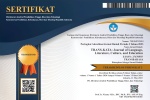Pre-Service Teachers’ Reflective Practices on Teaching Positive Psychology-Driven English Lessons
DOI:
https://doi.org/10.54923/jllce.v3i1.43Keywords:
Pre-service teachers, positive psychology, reflective practice, lesson plans, English language teachingAbstract
Positive psychology has flourished in English language education to support students' well-being. This article aims two-fold – to examine how pre-service English teachers integrated positive psychology in their English language lessons and explore their reflective practices after the lesson implementation. Thirteen pre-service teachers were asked to individually prepare a lesson plan to demonstrate how positive psychology and language (English) are integrated. After teaching the lesson to the students, they were told to submit a journal to investigate their reflective practices. The lesson plans were grouped according to themes, while deductive coding was used to analyze the reflective journals. Fives themes were derived from their integrated lesson plans, including positive and negative emotions, negative and positive emotions, individual strengths, and character strengths and weaknesses. Concerning the second aim of the study, higher-order reflective practices were deduced on teaching (i.e., instructional awareness act), students (i.e., student’s knowledge awareness act), and self (i.e., teacher’s feeling awareness act). The findings could help teachers create lesson plans fostering positive emotions in their English classes.





